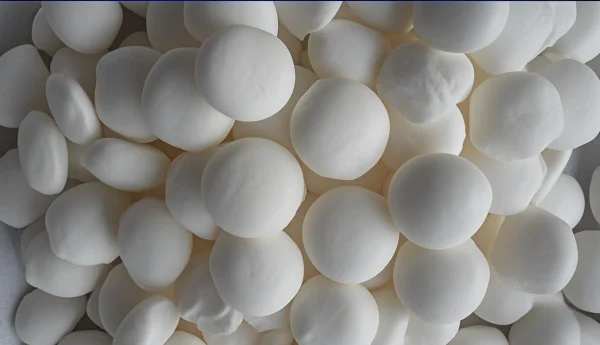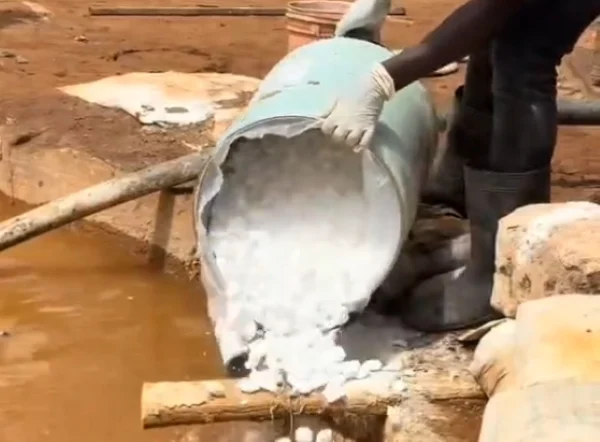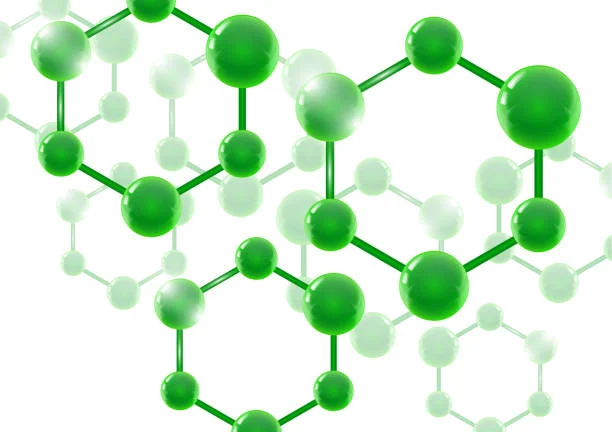
Introduction
The recovery of gold using sodium cyanide is a widely - adopted method in the mining and precious metals industries. Cyanide has a unique ability to form soluble complexes with gold, which allows for the extraction of gold from various sources, such as low - grade ores, tailings, and certain electronic waste. However, due to the high toxicity of cyanide, this process must be carried out with extreme caution and strict compliance with safety and environmental regulations.
Principle of Gold Recovery with Sodium Cyanide
In its natural state, gold is often found mixed with other minerals in ores. When Sodium Cyanide is introduced to gold - bearing ore, a chemical reaction takes place. In the presence of oxygen and water, gold reacts with cyanide to form a soluble compound. This reaction effectively dissolves the gold within the cyanide solution, separating it from the other insoluble minerals in the ore.
Step - by - Step Process
Ore Preparation
Crushing and Grinding: The initial step involves reducing the size of the ore. Large ore chunks are first crushed into smaller pieces using crushers. Subsequently, the crushed ore is ground into a fine powder in mills. This increases the surface area of the ore, enabling more efficient contact between the gold - containing particles and the cyanide solution. For example, in a typical gold mine, the ore might be crushed to a size of less than 10 mm during the primary crushing stage and then ground to a particle size where approximately 80% of the particles are less than 75 micrometers in the grinding stage.
Pre - treatment (if necessary): If the ore contains sulfide minerals or other impurities that could impede the cyanide leaching process, pre - treatment becomes necessary. For instance, when there are substantial amounts of pyrite in the ore, it can consume oxygen and cyanide, reducing the efficiency of gold extraction. In such situations, the ore may undergo roasting or bio - oxidation. Roasting entails heating the ore in the presence of air to oxidize the sulfide minerals, while bio - oxidation utilizes specific bacteria to oxidize the sulfide minerals at a lower temperature in a more environmentally friendly manner.
Leaching
Cyanide Solution Preparation: A dilute solution of Sodium cyanide is prepared. The concentration of the cyanide solution generally ranges from 0.05% to 0.2% (w/v), depending on the characteristics of the ore and the gold content. Lime is frequently added to the cyanide solution to adjust the pH to a range of 10 - 11. This alkaline environment helps prevent the formation of toxic hydrogen cyanide gas and also promotes the dissolution of gold.
Leaching Process: The ground ore is then mixed with the cyanide solution in large tanks or through a heap - leaching setup. In tank leaching, the ore - cyanide mixture is agitated, either mechanically or by air injection, to ensure good contact between the gold - bearing particles and the cyanide, thereby increasing the reaction rate. In heap leaching, which is more suitable for low - grade ores, the crushed ore is piled on an impermeable liner, and the cyanide solution is sprayed over the heap. The solution seeps through the ore, dissolving the gold as it progresses. The leaching process can last anywhere from several hours to several days, depending on factors such as the type of ore, particle size, and leaching conditions.
Separation of Solids and Liquids
Following the leaching process, the resulting slurry consists of solid waste (tailings) and a solution containing the gold - cyanide compound. Separating the solid and liquid components is crucial. This can be accomplished through methods like filtration or sedimentation. In filtration, the slurry is passed through filter media, such as filter cloths or filter presses. The solid tailings are retained on the filter, while the clear solution, known as the pregnant solution, which contains the dissolved gold, passes through. Sedimentation involves allowing the solid particles to settle at the bottom of a tank due to gravity. The supernatant liquid, the pregnant solution, can then be carefully poured off.
Gold Recovery from the Pregnant Solution
Zinc Precipitation (Merrill - Crowe Process): One common approach to recovering gold from the pregnant solution is zinc precipitation. Zinc dust or zinc shavings are added to the solution. Since zinc is more reactive than gold, it displaces the gold from the gold - cyanide compound. The gold then precipitates out as a solid, along with some impurities. After the reaction, the solid precipitate is filtered and further processed. The resulting gold - containing solid is then smelted to obtain pure gold.
Activated Carbon Adsorption (Carbon - in - Pulp/CIP and Carbon - in - Leach/CIL): In the CIP process, activated carbon is added to the slurry after the leaching stage. The activated carbon, with its high surface area, adsorbs the gold - cyanide compound from the solution. The carbon - gold compound is then separated from the slurry by screening. In the CIL process, the activated carbon is added during the leaching process itself. The gold - loaded carbon is subsequently removed from the system. The gold can be extracted from the carbon using a strong cyanide solution or other extracting agents. After extraction, the gold can be recovered from the extracting solution through methods such as electrowinning or further precipitation.
Refining
The gold obtained after precipitation or adsorption is usually not pure, containing impurities like other metals and non - metals. To obtain high - purity gold (usually 99.9% or higher), refining processes are employed. One common refining method is electrolytic refining. In this process, the impure gold is placed as the anode in an electrolytic cell, and a pure gold cathode is used. A suitable electrolyte, such as a solution of gold chloride, is utilized. When an electric current passes through the cell, the gold in the anode dissolves and deposits on the cathode. The impurities either remain in the electrolyte or form a sludge at the bottom of the cell.
Safety and Environmental Considerations
Toxicity of Cyanide: Sodium cyanide is extremely toxic. Inhalation, ingestion, or skin contact with cyanide can be fatal. All operations involving cyanide must be conducted in well - ventilated areas, and workers must wear appropriate personal protective equipment, including respirators, gloves, and protective clothing. Emergency response plans should be in place in case of cyanide spills or exposures.
Environmental Impact: Cyanide can be harmful to the environment if not properly managed. Tailings from the gold recovery process may contain residual cyanide. These tailings must be stored in secure impoundments to prevent the release of cyanide into the environment. Treatment methods, such as chemical oxidation or biological degradation, can be used to break down the cyanide in the tailings before their release or disposal. Additionally, strict monitoring of water sources near gold recovery operations is essential to ensure that no cyanide contamination occurs.
Conclusion
The use of sodium cyanide to recover gold is a complex but effective process. It involves multiple steps, from ore preparation to gold recovery and refining. While it offers a high - efficiency way to extract gold from various sources, the associated safety and environmental risks must be carefully managed. By following proper procedures, using appropriate technology, and complying with regulations, the gold recovery industry can continue to operate in a sustainable and responsible manner.
- Random Content
- Hot content
- Hot review content
- High-precision Delay Element( 25ms- 10000ms)
- Methyl Isoubtyl Carbinol 99% liquid MIBC
- calcium chloride anhydrous for food
- Fertilizer magnesium sulfate/magnesium sulfate monohydrate
- Phosphoric Acid 85% (Food grade)
- Lithium chloride, 99.0%,99.5%
- Food grade Antioxidant T501 Antioxidant 264 Antioxidant BHT 99.5%
- 1Discounted Sodium Cyanide (CAS: 143-33-9) for Mining - High Quality & Competitive Pricing
- 2China's New Regulations on Sodium Cyanide Exports and Guidance for International Buyers
- 3Sodium Cyanide 98% CAS 143-33-9 gold dressing agent Essential for Mining and Chemical Industries
- 4International Cyanide(Sodium cyanide) Management Code - Gold Mine Acceptance Standards
- 5China factory Sulfuric Acid 98%
- 6Anhydrous Oxalic acid 99.6% Industrial Grade
- 7Oxalic acid for mining 99.6%
- 1Sodium Cyanide 98% CAS 143-33-9 gold dressing agent Essential for Mining and Chemical Industries
- 2High Quality 99% Purity of Cyanuric chloride ISO 9001:2005 REACH Verified Producer
- 3Zinc chloride ZnCl2 for High Molecular Weight Polymers Initiator
- 4High Purity · Stable Performance · Higher Recovery — sodium cyanide for modern gold leaching
- 5High Quality Sodium Ferrocyanide / Sodium Hexacyanoferr
- 6Gold Ore Dressing Agent Safe Gold Extracting Agent Replace Sodium Cyanide
- 7Sodium Cyanide 98%+ CAS 143-33-9











Online message consultation
Add comment: